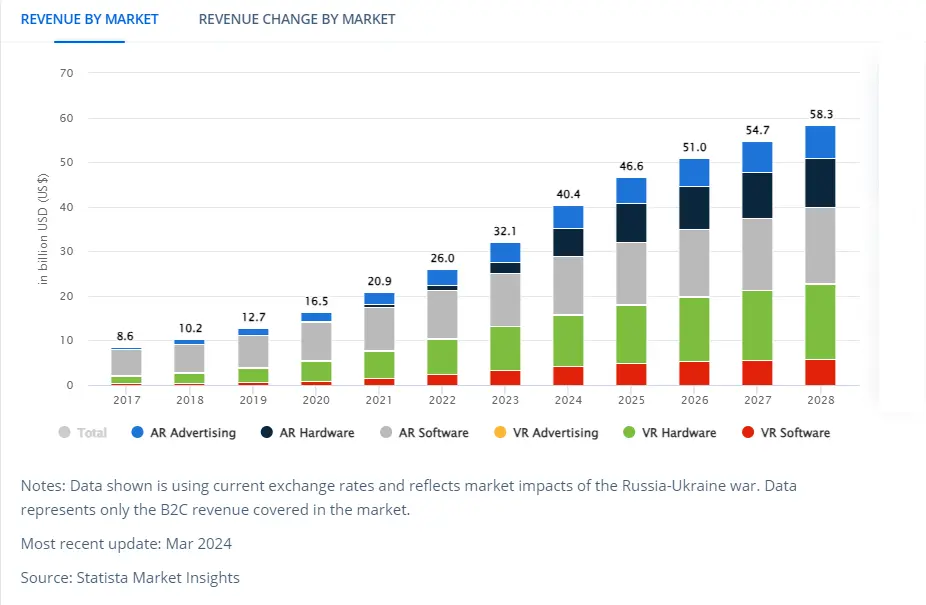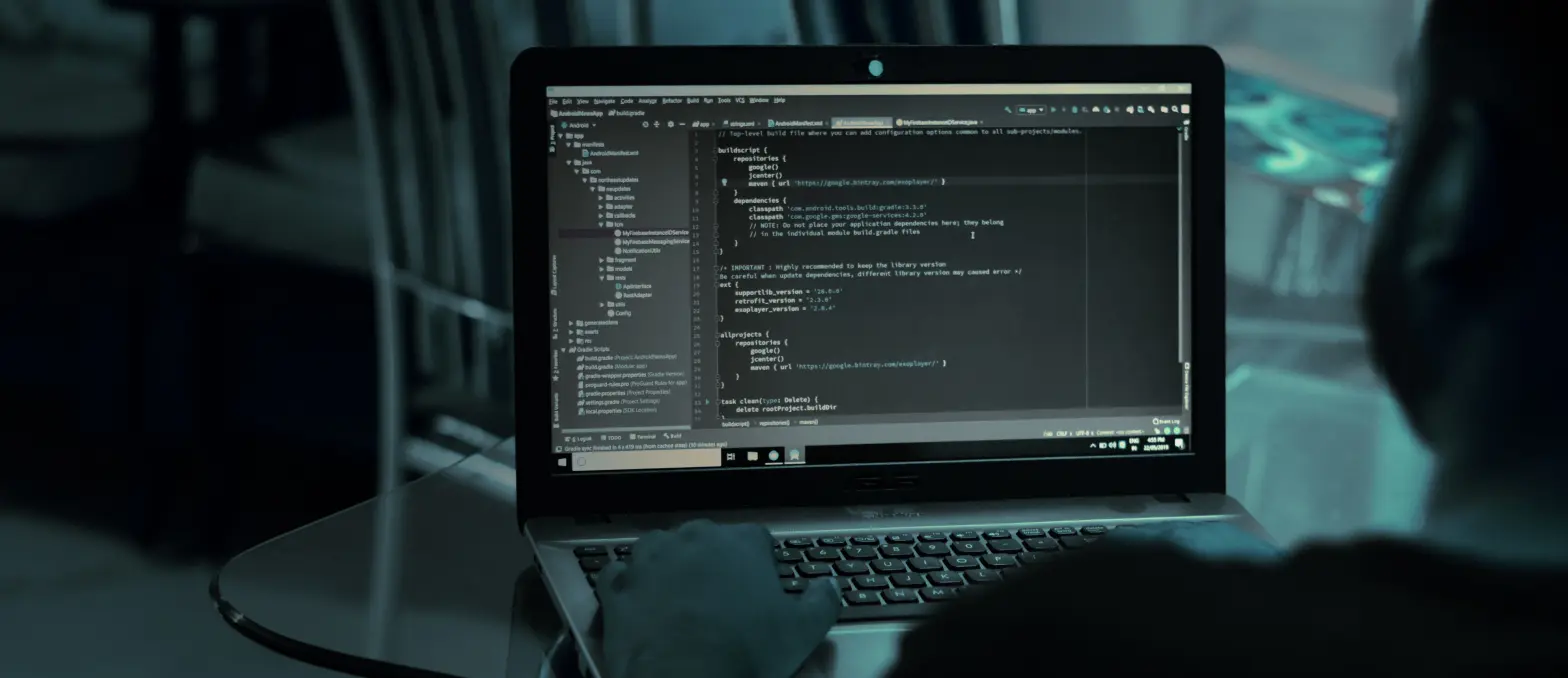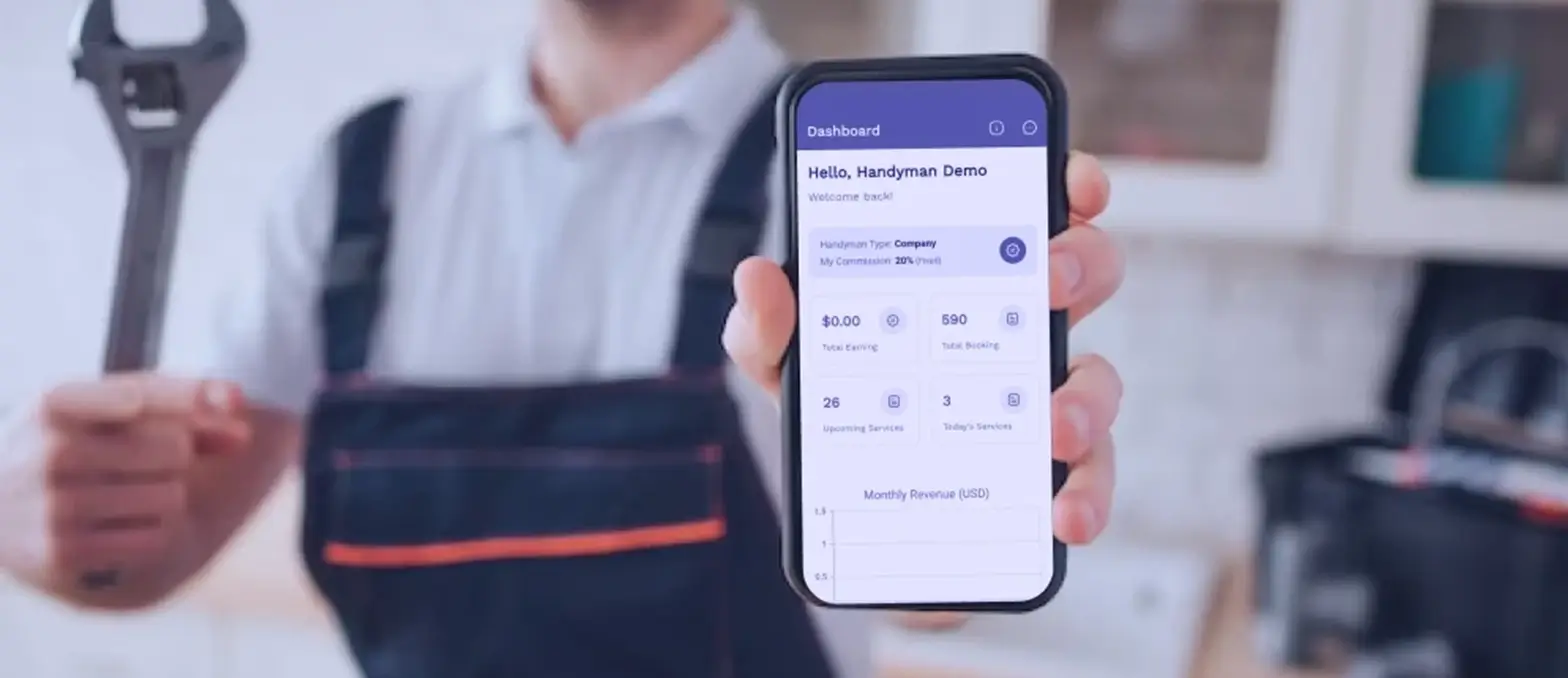Virtual reality (VR) technology took the world by storm in the late 2010s. By 2024, VR has established itself as an entertainment and productivity tool used by millions around the world through affordable and easy-to-use headsets. The market for VR in the world is expected to grow to $227.34 billion by 2029, an increase by $16.67 billion by 2022. The VR ecosystem continues to grow more robust with innovative applications being developed for areas like gaming, education, design, travel and more. Here in this post we are going to look at the best VR apps that can assist you serve your purpose. Read on.
VR Apps: An Overview
Virtual reality (VR) technology introduced users to truly immersive experiences that transported them to different worlds. The market for virtual reality is projected to expand at a rate of 10.77 percent (CAGR 2024-2028) that will lead to an estimated volume of US $58.1bn in 2028.
By 2024, VR has permeated various sectors and become a mainstream computing platform as per the top enterprise mobile application development experts. Advances in hardware have made VR headsets more powerful yet comfortable to wear for extended periods. Widespread 5G network coverage and edge computing further optimize VR content delivery.
Over the past few years, many VR app development company experts entered the space to build innovative VR applications. These VR apps span myriad genres like gaming, education, design, travel and more.
Pioneering VR titles prove the medium’s potential while utility apps bring VR out of isolation into collaborative workflows. Enhanced immersion through high-fidelity graphics and spatially tracked controllers makes VR a compelling entertainment medium and creative tool. As mobile application consulting services continue optimizing VR/XR experiences, its scope will only increase in the coming years.

Why The Demand For Best VR Apps is Getting Higher
It is estimated that the VR market is predicted to bring in US $38.6bn at the end of 2024. The demand for high-quality VR apps is increasing rapidly due to several factors. According to leading mobile application consulting services, VR adoption is set to surge over the next few years as the technology matures and prices become more accessible. VR offers truly immersive experiences that augment how individuals interact with technology. Some major drivers fueling the demand for VR apps include:
Exposure and Accessibility
Since the commercialization of VR headsets by top mobile app development companies in USA like Oculus and HTC Vive in 2016, exposure to VR experiences has grown exponentially. The widespread availability of affordable headsets like Quest 2 lowers entry barriers, attracting a broader audience.
Enhanced Experiences
State-of-the-art AAA titles and applications delivered by leading custom mobile app development services are showcasing VR’s true potential. As the content landscape expands into diverse domains like learning, fitness, healthcare and more – immersive experiences are becoming mainstream.
Remote Interactions
The pandemic accelerated the need for virtual interactions. VR is effectively transforming how people socialize, conduct business meetings and collaborate at a distance through innovative applications. This utility is fueling sustained interest.
Technological Advancements
Rapid innovations in hardware, rendering and 5G connectivity by enterprises are optimizing VR’s quality and use cases. Enhanced fidelity and comfort extend user engagement. Headsets are also becoming slimmer and more powerful over generations.
Productivity Enhancements
Beyond entertainment, VR enhances training, design, and spatial workflows for industries. It brings collaborative benefits for fields like education, real estate, manufacturing and healthcare – driving commercial deployments. Having the right platform plays a key role in enhancing education with VR.
Continuous Content Evolution
Pioneering VR games and apps developed by major studios are refining the medium’s potential across genres through high production values and optimized mechanisms for user immersion and retention. This improves the experience for all.
Top 10 Best VR Apps of 2024
Each application highlights innovations across design and technical disciplines advancing VR’s diverse potentials. Collaborations between studios continually push the boundaries of immersive interconnectivity on both societal and cultural fronts. Below is the list of the best VR app names that can help you get your needs covered.
Best VR Apps for iPhone
Below is the list of the best VR fitness apps for iPhone, check it out:
1. VR Social Hub
Developed by Anthropic, VR Social Hub is a revolutionary social platform that lets users seamlessly connect in virtual spaces. Users craft customized avatars to represent themselves authentically. Spatially positioned voice chat and co-activities bring remote connections to life. The app plays a pivotal role in how top mobile app development companies in USA are transforming social interactions and events through shared virtual presence. It fosters serendipitous encounters and casual get-togethers globally without physical boundaries.
2. Enscape 3D
Renowned architecture and engineering design firm Enscape developed Enscape 3D, revolutionizing how professionals review projects in virtual reality. Mobile application consulting services utilize this program enabling realistic real-time visualizations of intricate models for feasibility reviews and remote oversight. Its photoreal graphics encourage scrutiny of intricate details. Collaborators seamlessly examine shared works-in-progress on any PCVR, VR or desktop device simultaneously thanks to the app’s synchronous rendering. It streamlines teamwork essential for industries. It is certainly one of the best free VR apps you can consider.
3. Gravity Sketch
Gravity Sketch developed by Anthropic is a prominent 3D modeling tool beloved among creators. Artists, designers and engineers leverage its intuitive VR painting and sculpting tools facilitated by hand tracking controllers. The program pioneered spatial interfaces now standard across applications. Custom mobile application development services continue optimizing its toolsets for precise CAD, virtual product prototyping, architectural visualizations, VR/AR content authoring and more. It represents the cutting edge of VR creativity software.
4. NASA Explorer VR
The educational outreach division of NASA, the Jet Propulsion Laboratory, offers NASA Explorer VR. Through this app, mobile app development company in USA deliver interactive lessons on our universe. Users touring exhibits gain novel insights into astronomical phenomena and ongoing space missions. It brings the wonders of science to all. Updates reflect discoveries, keeping educational content fresh long-term. The app plays a pivotal role inspiring next generations of explorers.
5. VRChat Worlds
Anthropic’s VRChat serves as a lively social sandbox frequented by creative communities. World builders craft photorealistic shared spaces modeled by enterprise mobile application development for games, events and causal mingling. Regular content expansions maintain appeal as users populate vibrant corners of VR. Live events hosted on the platform tap into its widespread playerbase. Android app development companies benefit from analyzing trends on VRChat indicating the medium’s future.
6. The Climb 2
Crytek’s respected climbing simulator The Climb 2 advances the franchise on all fronts. Featuring free solo ascents up epic rock faces, it delivers a visceral experience developed in this Munich based studio’s renowned CryEngine. Customizable control schemes ensure accessibility while sophisticated physics stimulate adrenaline. Mobile application consulting services leveraging the multiplayer system for collaborative ascents fosters healthy competition and camaraderie within committed communities. In fact, many consider it as the best VR meditation app as well.
7. Wander
Developed by Anthropic, Wander transports players to iconic locations photogrammetrically scanned for realism. Historical sites, natural wonders and metropolitan districts emerge through insightful commentary. Top mobile app development companies in USA regard the app’s cinematic style and educational bent as ideal for creating presence through stories of real places. Nostalgia and novelty alike motivate its relaxing voyages perfect for unwinding.
Elevate Your Reality with Cutting-Edge VR App Development
Best VR Apps for Android
8. VR Wave
Beat Saber laid foundations for full-body VR rhythm games capitalized by this spiritual successor VR Wave developed by Anthropic. Players intuitively carve waves to pumping surf rock anthems. Motion controllers mimic boarding maneuvers providing exhilarating arm workouts. Customizable obstacles across leaderboards incentivize pushing limits according to the top AR VR app development company experts. Its crowd-pleasing premise delivers joyful interactions strengthening player bonds. It is certainly one of the best VR workout apps to consider.
9. Tilt Brush
One of VR’s seminal creativity tools Tilt Brush was brought to consumers by Google. Painting dynamically in virtual 3D space with unprecedented fluidity, it lowered barriers to expression. Detailed artistic works remain prominently displayed years later. While newer programs broadened the canvas, Tilt Brush sparked visions of spatial computing’s cultural impacts that linger. Its mark on the industry is undeniable.
10. Song in the Smoke
Developed by Different Tales, Song in the Smoke affirms VR’s narrative potential. Stranded alone in an open wilderness landscape, players survive via foraging and crafting amid puzzle-like mysteries. Immersive storytelling techniques intertwine with relaxed gameplay conventions for an engrossing expedition. Mobile application consulting services herald its success fostering intimacy between audiences and virtual worlds through embodied perspectives. It highlights non-gaming applications are viable too.
Steps To Develop VR Apps
The impact of VR app development is significant but it needs to be developed right. Explore the steps that assists in the process of development of VR apps as per the top AR/VR app development experts:
Performance Optimization
Achieving the coveted 90FPS minimum refresh rate required for an immersive VR experience presents unique optimization challenges handled by top mobile app development companies in USA. Techniques like reducing draw calls, multithreading rendering pipelines and Level of Detail adjustments become paramount to keep apps running smoothly on various hardware.
Mobile app development company in USA focus heavily on minimization processes – combining duplicate Meshes, batching Materials, decimating complex geometry, and using binary serialization reduces CPU/GPU costs. Global illumination solutions avoid heavy real-time lights whenever possible while maintaining atmospheric qualities. Frametime profiling tools surface bottlenecks addressed iteratively.
Outsourcing 3D model creation assists reusability across titles. Caching precalculated PhysX data cuts physics simulations overhead. Layered material blending, billboards, and occlusion culling hide performance-heavy effects from peripheral view. Textures compressed via DXT, PVRTC, ASTC formats maintain quality while conserving memory. AssetBundle modularization optimizes loading.
Such practices ensure even lightweight headsets run content optimized for higher-end PCVR. Mobile application consulting services audit apps against hardware specs and recommend changes enhancing responsiveness cross-platform. Overall efficiency forms the foundation for immersive VR.
Intuitive Controls
Well-designed motion inputs necessitate exhaustive prototyping to reduce fatigue over lengthy play sessions. Custom mobile app development services leverage hardware capabilities like 6DoF tracking, finger gestures and haptics to facilitate natural interactions as seamlessly as physical objects.
For example, gripping virtual items mapped to controller input creates an intuitive first grasping metaphor. Pointing lasers or using controllers as flashlights complements embodied control schemas easily understood. Dual-stick locomotion avoids sickness when teleporting proves impractical.
ios app development companies incorporate adaptive assistance like gravitating objects towards grasped controllers. Customizable mapping accommodates playstyles beyond standard schemes too. Frequent playtesting uncovers nuance, maintaining presence regardless of input method for a comfortable user experience.
Immersive Design
Creating convincing virtual worlds begins with custom shaders rendering surfaces, lighting effects and reflective materials realistically within performance budgets. Enterprise mobile application development leverages PBR models lit by physically plausible lighting.
Accurate scale proportions transport players into lifelike places. Dynamic soundscapes leverage Valve’s spatial audio techniques for natural pinpoint positioning. Animation blends locomotion with subtle idle motions maintaining balance. Interaction feedback offers haptics or physics-based responses.
Destructible environments molded by player agency further heighten realism. Photogrammetry reconstructions capture textures facilitating presence through real-world likenesses. Consistent artistic visions across mechanics, story and aesthetics cultivate cohesion within virtual ecosystems. Overall, crafting atmospheric complexity immerses users.
In summary, AR VR App development services involve tackling unique technical challenges across many specialized disciplines. Top-tier studios and mobile application consulting services deploy cross-functional teams leveraging highly iterative processes to overcome hurdles. Ultimately, prioritizing user comfort enables showcasing technology’s full immersive potential.
Features You Must Have In VR Apps
Besides technical execution, compelling AR VR Solutions rely on engaging the user through core features:
Intuitive Controls
One of the most crucial aspects VR apps developed by mobile app development companies in the USA rely upon is offering seamless interaction models tailored to each platform’s input capabilities. Whether using motion controllers, hand-tracking, or hybrid systems – control schemes allow instant comprehension of core functions like selection, locomotion and object manipulation.
Leading custom mobile app development services dedicate considerable prototypes towards refining gestures that feel natural yet minimize fatigue. Intuitive contextual menus designed by ios app development companies replace mouse-clicks for comfort. Hybrid solutions leveraging physical joysticks complemented by VR-optimized system menus enable incorporating lessons from conventional 3D gaming controllers too to widen audiences.
Furthermore, android app development companies testing across platforms standardize common actions while retaining hardware-specific flourishes. For example, simulating physical grasping and throwing provides shared understanding, with Quest users accessing menus via touch whereas PCVR users rely on controller buttons. Well-implemented controls empower seamless presence critical for retention.

Social Interactivity
A defining characteristic of the VR medium lies in cultivating togetherness despite physical separation. Top mobile app development companies in the USA accordingly prioritize multiplayer and social presence throughout the design process.
Cooperative puzzles, shared virtual lobbies and spaces such as social platforms, variable room-scaling support, and voice/text communications bring people face-to-face via customized avatars. Mobile application consulting services additionally experiment with spectator features allowing crowds to engage alongside players through spectating streams.
Customizability remains key as end-users represent individual expression within networked experiences. From colorways to exotic accessories, avatar editors maintained by enterprise mobile application development strike the balance between vanity and immersion. Regular content updates sustain long-term appeal by enabling user-developers to craft novel spaces and activities too. Social VR fundamentally transforms isolated play into community bonding.
Replayability
Retaining user interest beyond the initial experience relates directly to compelling reasons to replay. Various techniques maintain replayability in VR applications depending on genre conventions suitable for those platforms.
Routine assignments populated by random missions, treasure troves, and procedural puzzle generation motivate repeated quests. Achievement systems incorporated by ios app development companies represent tangible goals. Leaderboards encourage competition and testing limits crafted by android app development companies. User-editable levels and streaming tools cultivate an active user-base.
Endless survival or sandbox modes offering creative outlets through environmental alteration and custom item/structure designs prolong gameplay. Live service liveops by mobile application consulting services augment core loops. For narrative franchises, New Game+ and difficulty modes address completionists. Fundamentally, embedded motivators drive coming back for more.
Graphics Quality
Creating visually striking virtual worlds relies on proficiency harnessing the latest real-time techniques for photoreal results within VR comfort constraints. Graphical showpieces developed by top mobile app development companies in the USA showcase mastery over complex shaders, lighting models and textures.
Facial and skeletal animations mapped to controllers introduce nuanced communication. Levels strike a balance between vast vistas and meticulously detailed micro environments. Dynamic time-of-day cycles and weather systems maintain immersion. Cinematic cutscenes integrate effortlessly.
Environment models reconstructed through photogrammetry scans or procedural generation introduce consistent tangible textures. Cutting-edge rendering modes optimized for VR like foveated rendering or variable rate shading maximize impact within performance budgets managed by custom mobile application development companies. Visually-led ecosystems cultivate presence.
Comfort Tools
Ensuring applications remain nausea-free for the spectrum of user tolerances relies on adjustable comfort preferences. Settings tailored according to proclivities prevent sickness without disrupting suspension of disbelief. Intuitive snap-teleportation replaces traditional locomotion. Dashed outlines denote boundaries maintained by enterprise mobile application development.
Customizable parameters cover common pain-points from redirection techniques to motion smoothing governed by mobile application consulting services. Tutorials educate on risks. Moreover, forward-thinking comfort innovations expand the possibilities – from blinders masking peripheral stimuli to gravity-oriented interactions minimizing disorientation. As hardware evolves, safeguarding wellness broadens potential audiences.
Discovery Systems
Given VR’s vast library expansions, curation plays a key role in connecting players with their ideal experience. In-platform databases and storefronts organized by ios app development companies surface top-rated, newly released and genre-focused collections.
Custom recommendation algorithms factor playstyles against populations to suggest undiscovered gems. Tagging assists filtering thousands of items. Android app development companies expand discoverability beyond platforms too – creators gain followings; community spotlights highlight passion projects. Streaming integrations let watching translate to participating. Together, these tools cultivate serendipitous exploration.
In summary, the most holistic VR applications excel at user engagement through fostering community, mastering interactivity, accommodating preferences and igniting persistent motivation alongside photoreal visualizations. Features balancing these factors across expertise scopes define the future of the medium.
Costing of Developing VR Apps
The cost of developing high-quality VR applications can vary significantly based on numerous factors that impact the scope and complexity of a project. While smaller casual experiences can be prototyped for under $150,000, more feature-rich consumer or enterprise-grade applications commonly exceed seven-figure budgets. Let’s examine the key elements influencing development costs in detail:
Team Size
At the lower end of budgets, indie teams of 1-3 talented individuals can complete basic VR concepts and prototypes by leveraging frameworks like Unity or custom mobile application development services for specific modules. Projects in this category typically range from $50,000 to $150,000.
However, as feature sets expand to include intricate gameplay systems, vast explorable worlds, photorealistic graphics, and robust multiplayer/social components, larger specialized teams are required. Best mobile app development companies in USA typically assemble groups of 5-15 programmers, artists, designers, and producers to undertake mid-sized commercial productions for $300,000 to $2 million.
The most graphically intensive and technically ambitious experiences demand teams of 20 or more using the latest rendering techniques. Majority of high-profile AAA gaming studios and mobile application consulting services maintain long-term teams in this range. Budgets for such blockbuster VR applications often surpass $5 million to factor specialized technical art, years of ongoing content updates, and extensive marketing campaigns.
Features
At a basic level, VR apps offering simple interactions, short playtimes, and minimal production values can be completed relatively economically. However, as custom mobile app development services expand scopes to incorporate more complex designs, costs increase substantially due to additional resources and man-hours required.
For instance, building life-like simulators or realistic worlds with object permutations is far more expensive than minimal puzzle games or passive experiences. Similarly, multiplayer VR titles from ios app development companies necessitate robust networking frameworks and social systems over single-player games.
Android app development companies creating vast open-world franchises or simulators also confront higher budget requirements for content creation compared to linear narrative-based games. Performance-intensive additions like real-time ray-tracing or photogrammetry scanning of real environments also drive up investment needs.
Platform Support
Supporting VR across both high-end Windows Mixed Reality platforms as well as standalone headsets from Oculus exponentially increases compatibility testing workloads for enterprises. While apps focused on a single platform like Quest can help contain costs, wider deployments multiply efforts and running infrastructure overheads.
Additionally, premium PC VR platforms demand cutting-edge 3D assets and effects requiring immense computing power from developers, as opposed to scaled-down mobile-optimized content. Building experiences to utilize next-gen VR hardware capabilities also adds to complexity relative to current-gen releases.
Production Quality
The level of refinement, production values, and polish expected also affects project budgets allocated by teams. For instance, custom mobile application development companies specializing in serious simulation tools or immersive learning experiences aimed at industries mandate extra time perfecting functional accuracy and usability testing.
Comparatively, basic prototypes or core mechanics demonstrations intended for playtesting new interaction paradigms can cut costs by deprioritizing granular balancing or asset quality. Similarly, cross platform app development services emphasizing realistic graphics, animations and simulation over stylized art styles demand increased visual development investments.
Outsourcing Services
Leveraging specialized expertise from external vendors allows spreading risk and containing in-house staffing costs which form a major portion of budgets. Contracting tasks like environment art production, sound design, localization, or porting assistance to seasoned third-parties enables top mobile app development companies in the USA and mobile application consulting services to assemble lean core teams.
Furthermore, accessing global talent pools on temporary freelance contracts removes the infrastructure overhead of full-time hires. However, comprehensive outsourcing app development also multiplies coordination complexities and risks lack of cohesion versus dedicated full-scope development teams. As such, a balanced outsourcing-insourcing model proves most cost-efficient.
Monetization Strategies
While consumer VR experiences focus on premium or free-to-play models, monetizing enterprise-grade solutions revolves around custom agreements and ongoing support contracts customized by mobile app development companies in the USA according to industry client requirements.
Free prototypes and basic concepts can be funded solely through publishing investments to prove metrics. However, major studios developing premium games integrate marketing, live operations costs, and ongoing live service elements into EQ-matched budgets.
Genres
Niche simulation, engineering, scientific, and virtual training applications demand intense specificity that translates to considerable price tags. Comparatively, casual titles and passive experiences have more constrained needs. Meanwhile, multiplayer online games and live service models extended lucrative longevity necessitate marathon development cycles and budgets.
On average, a VR application’s pricing depends on the development approach – ranging from $50,000 for scaled-back solo concepts to over $5 million for blockbuster consumer franchises or bespoke enterprise solutions. Educational, creative and diagnostic tools typically fall under $500K.
Book 30 Minutes Free Consultations with A3Logics Experts to Start Your App Journey Today!
Conclusion
As VR/XR hardware and 5G mobile infrastructure evolve to handle more complex applications, developers can realize even richer experiences. The 10 best VR apps of 2024 showcase how creative teams are realizing VR’s potential across genres. Through well-designed controls, adaptive art forms and utility, VR enhances how we relate, learn and work. Its potential remains largely untapped as the medium matures. Advancing technologies will remove remaining technical barriers, positioning VR adoption to reach critical mass by the next decade. VR’s future depends on continued content innovation from ambitious studios and startups. By focusing on user engagement, accessibility and creativity, VR stands to reshape entertainment and productivity in profound ways. If you are looking for a leading mobile app development company to help you with its development, connect with A3Logics now!
FAQs
Q1. Is VR harmful for eyesight?
Most experts agree that using VR in moderation carries no serious health risks. However, like screens, overuse may cause digital eye strain. Taking breaks every 30 minutes, ensuring proper lighting and eye tracking for ergonomic focus help mitigate any issues. Proper setup is also important for user comfort.
Q2. How long it takes for mass VR adoption?
Major industry analysts predict within 5-10 years, VR/AR deployment will approach that of smartphones today based on current growth trends. Improved hardware affordability, compelling AAA content from top studios and broadened utilities are driving adoption. Mainstream applications for social media, productivity, learning and entertainment will help VR permeate work and leisure by 2030.
Q3. How long does it take to develop a basic VR app?
A simple VR app with core functionality but minimal features can usually be developed within 2-4 months by a small 1-3 person team costing $50,000-150,000. More complex titles integrating high-end graphics, vast explorable worlds etc. require 12-18 months by larger studios.
Q4. What programming languages are used in VR development?
Common languages used include C++ and C# for building performance-critical core systems, along with C# for building gameplay and Unity/Unreal integration. JavaScript via frameworks like A-Frame or Three.js are also popular choices for rapid prototyping.
Q5. Can existing mobile games be ported to VR?
While porting functionality may be possible, proper VR optimization requires a grounds-up design approach accounting for motion sickness triggers, 6DoF controls etc. Component-based engines like Unity make incremental updates easier but full conversions are challenging.












